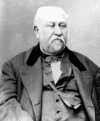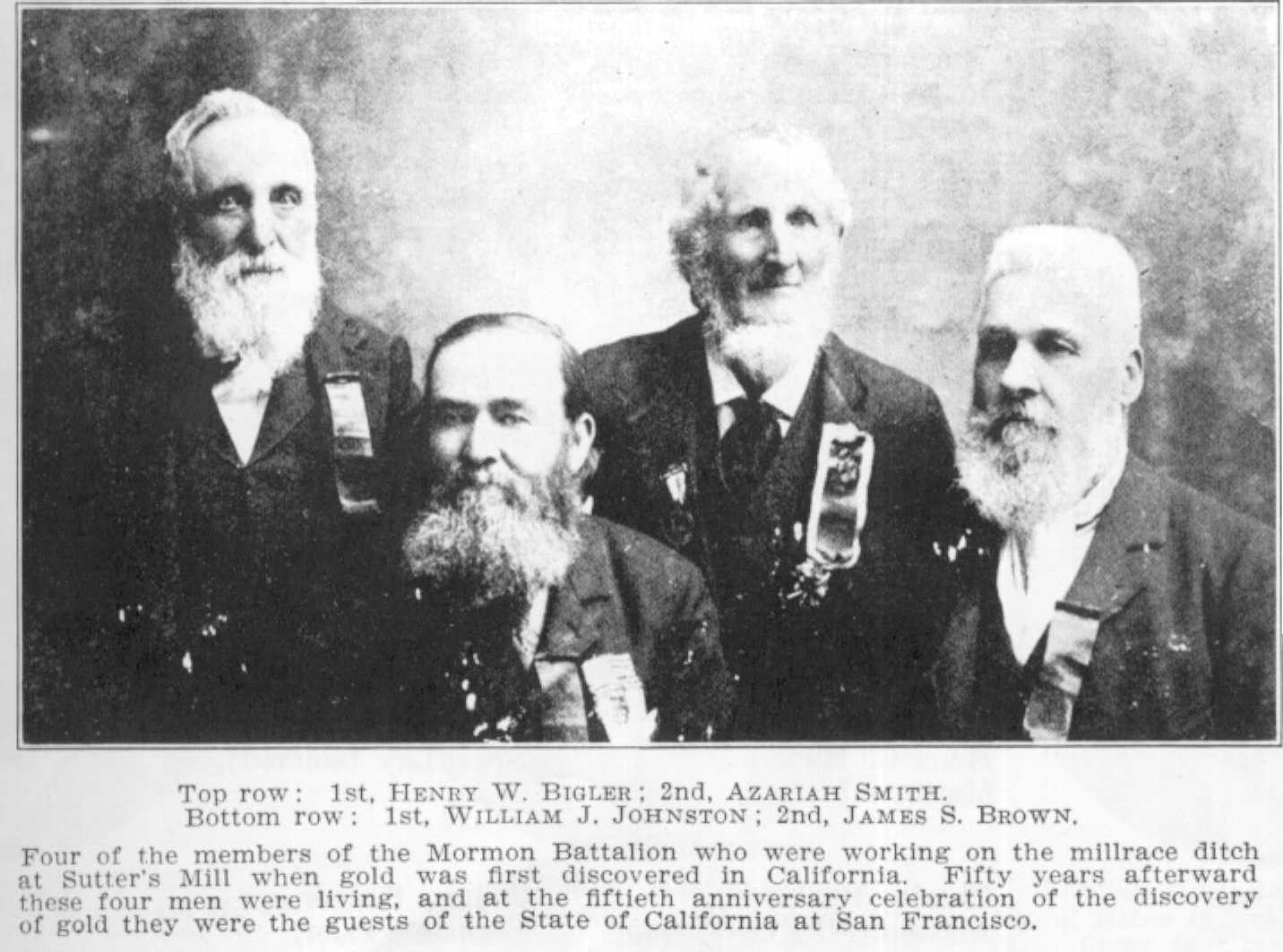Alexander Stephens was the son of Alexander Stephens (1775-1824) and Mary "Polly" Daley (1778-1824/1844) of Rowan County, North Carolina. Alexander (1813-1894) is the brother of Martha Stephens (wife of Captain James Brown) and Elizabeth Stephens (wife of Daniel Brown). He is the grandson of Richard Stephens (1750-1829) and Martha Roberts (1755-1825) of Salisbury, Rowan County, North Carolina.
Alexander married Margaret Northam (1813-1832) in 1831, Agnes Rogers (1826-1891) in 1839, Mary Northam in 1839, Ann Eliza Palmer (1834-1894) on September 8, 1852 and Alice Eliza Hardman (1836-1906) on February 4, 1892.
Alexander served in the Mormon Battalion Company "D" under Captain Nelson Higgins. Also in this Company were his cousin, James Stephens Brown, relative Nathaniel Vary Jones, cousin-in-law Eleazer Davis, and relative Joshua Chandler Abbott.
On January 1848, six members of the Mormon Battalion were working for John Sutter, building a sawmill on the south fork of the Sacramento. The battalion had been mustered out at San Diego the previous July and these mem had followed the counsel of the Mormon Church leaders that they remain in California and work until the following spring.
 
John W. Marshall and John Augustus Sutter
On the afternoon of January 24th, James W. Marshall, Sutter's partner and foreman of construction, was walking along by the tailrace which had been constructed to return to the river the water which ran over the wheel. His eye caught something bright and he picked it up. It proved to be gold.
James Barger next found a scale of the precious metal and soon all of the men had a little nugget or more. In addition to Barger there were Henry W. Bigler, Alexander Stephens, James Stephens Brown, William Johnson, and Azariah Smith, all recently detached from the Mormon Battalion.

Alexander Stephens died three years before this photo was taken.
In the days that followed they continued their search for gold, and during off hours were liberally rewarded for their labors discovering what became some of the richest claims in an area that eventually produced five hundred million dollars of wealth. And this, while the matter was still very largely a secret, known only to those laboring along the river.
These three battalion men had given their word to work for Sutter and Marshall to build a sawmill, they therefore confined their prospecting to their off-time until the mill was completed on March 11, 1848.
That spring the news of gold began to spread. Sam Brannan picked up the word at Sutter's and hurried on to San Francisco where he shouted the gold tidings. Men went mad. The city was almost deserted as men rushed to the diggings.
Gold fever spread with a result that is well-known. Hundreds of thousands raced to California and the American Sacramento River valleys. Not to be deterred from their obligations to their families and their Church, the battalion men completed their work for John Sutter then purchased wagons, horses, tolls, and seeds, then left the Sacramento area for the semiarid wilderness of the Salt Lake Valley.
"...Duty called, our honor was at stake, we had covenanted with each other, there was a principle involved for with us, it was God and His kingdom first. We had friends and relatives in the wilderness. Yea, in an untried desert land, and who knew their condition? We did not, So it was our duty before pleasure, before wealth, and with this prompting we rolled out..."

Sources:
PAF - Archer files = Alexander Stephens < Alexander Stephens + Mary Polly Daley > (1) Martha Stephens + Captain James Brown + (7) Phebe Abbott > Orson Pratt Brown
Photos and information from
Additions, bold, [bracketed], some photos, etc., added by Lucy Brown Archer
Copyright 2001 www.OrsonPrattBrown.org
|